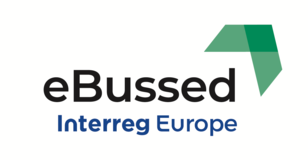Virtual pondering on drivers and barriers
Sometimes the circumstances force to change plans and challenge to a new way of collecting and sharing information. That was the case with the eBussed Drivers and Barriers of e-bus deployment workshop on 22 April, when the eBussed project workshop took place in home offices instead of sunny Livorno. A virtual workshop can be fruitful, though, as was proven in the discussions.
In his inspiring introduction to the topic, Dr.-Ing. Markus Dietmannsberger described that in Hamburg besides technological criteria, emphasis is also put on the sustainability performance of bus manufacturers. Aiming particularly at transparency in the battery supply chain, sustainability topics are integrated into the tender process - with growing importance over the upcoming years.
Key drivers
When it comes to e-bus deployment, the number of recognized barriers exceeded drivers. Yet, with a strong and targeted political driver, it will make the barriers easier to overcome. The transmission of information should not be underestimated. Availability of basic information is an important driver enabling to reduce errors to the minimum.
The most significant identified driver was the political will to achieve zero-emission public transport. Predictably, also financial possibilities are among the most important drivers towards e-buses. And vice-versa, the lack of funding and political will acts as a barrier.

Virtual meeting participants in a group photo. Screenshot by Jassi Aho.
A changed future
Urban space is limited and there is constant competition for it. Before changing the means of transport, a behavioural change is always needed. Sometimes residents’ opinions are based on false information or the experienced space plays an immensely important role. For example, they may have a perception that the electrical facilities take up much space, leading them to oppose e-buses.
The COVID-19 does not only affect the working ways of the project but also to the topic itself: public transportation that may be drastically changing due to the pandemic. In the workshop, the virus was identified as a super-barrier to electronic public transport. Despite the potential influence, the pandemic has its other side. In Livorno, passengers have seen the small capacity vehicles purchased for the public transport on the islands as a better and safer option due to the smaller infection risk. Thus, they have worked as promotors for a new mode of transport.











